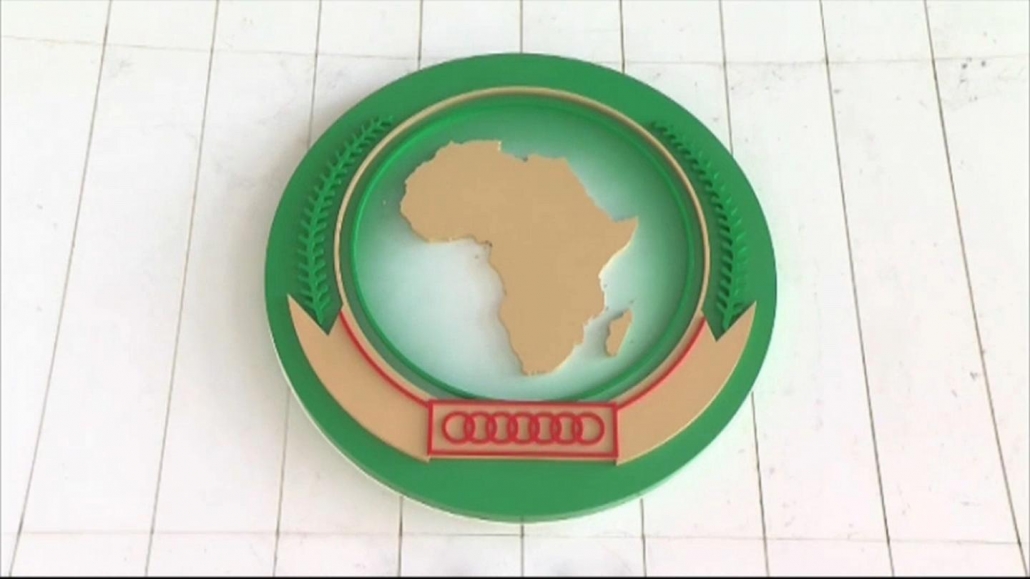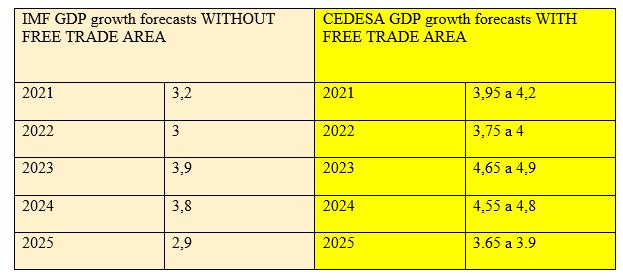The African Continental Free Trade Area boosts Angola’s economic growth

1-Introduction: The Free Trade Area and Angola
Angola deposited the ratification of accession to the African Continental Free Trade Area (ACFTA) on the 4th of November 2020, after the National Assembly approved for ratification on the 28th of April of this year, and the President of the Republic signed a Letter of Ratification on 6 October.
The agreement is scheduled to enter into force on 1 January 2021.
The ACFTA has so far been ratified by 30 countries and, in the first phase, will lead to the elimination of tariffs on 90% of products. In addition, the agreement commits countries to progressively liberalize trade in services and to deal with a number of other non-tariff barriers, such as long delays at national borders that hinder trade between African countries. Eventually, in the future, the free movement of people and a single African air transport market may emerge within the newly created free trade area.
The goal of this agreement is to create the largest free trade area of its kind in the world, with a gigantic market from Cairo to Cape Town. The ACFTA brings together 1.3 billion people and a combined gross domestic product (GDP) of more than $ 2 trillion.
Essentially, the agreement’s business goals are:
-Create a single market, deepening the economic integration of the continent;
– Assist the movement of capital and people, facilitating investment;
– Move towards the establishment of a future continental customs union.
As stated, the agreement initially requires members to remove tariffs on 90% of goods, allowing free access to commodities, goods and services across the continent.
Table 1 – ACFTA Goals

2- The impact of the FTA on Angola’s foreign trade
Recent modeling by the United Nations Economic Commission for Africa (UNECA) projects that the value of intra-African trade will be between 15% and 25% higher in 2040 due to the ACFTA. The analysis also shows that least developed countries are expected to experience the greatest growth in intra-African trade in industrial products by up to 35%[1].
There is no doubt that insertion in a free trade area increases foreign trade in a country, this should happen in Angola, aiming, in view of the United Nations data, for a reinforcement of at least 25% of foreign trade with the rest of Africa until 2031.

This percentage arises from the weighting of the UNECA modeling referred to above with specific factors underway in Angola[2] such as the political commitment to liberalization and diversification of the economy, the operationalization of some international transport structures such as the completion of Luanda International Airport, the entry into operation the deep water port of Caio, as well as the operation of the Lobito Corridor; a rail corridor for international goods traffic starting in Porto do Lobito (Benguela) and integrating three countries – Angola, Democratic Republic of Congo and Zambia – the government’s wish being one of the main axes of circulation of raw materials and goods in the territories it crosses.
There is a tripartite combination that enhances Angola’s medium-term growth:
i) the liberalization and diversification of the Angolan economy with the manufacture of new products (some of which Angola had specialized in colonial times and later abandoned) and services,
ii) membership of the African free trade area, and
iii) the construction of transport logistics infrastructures.
This interaction is essential for the membership to a free trade area to be successful. The free trade area will be the driver of growth, which in turn is accelerated by the combination of economic diversification and new logistical structures. Tariff reductions can play a significant role in the development of intra-regional trade, but they must be complemented by policies to reduce non-tariff bottlenecks (eg logistics).
3- Increase in foreign trade and economic growth in Angola
The forecast is that the result of this interaction will be an increase in international trade that will lead to a more accelerated growth of the Gross Domestic Product (GDP).
As a rule, an increase in international trade leads to an increase in GDP[3].
In the past two centuries, the world economy has experienced sustained positive economic growth and, over the same period, this process of economic growth has been accompanied by an even faster growth in global trade. Similarly, we found that there is also a correlation between economic growth and trade: countries with higher rates of GDP growth also tend to have higher rates of growth in trade.
Among the potential growth factors that can result from greater global economic integration are: Competition (companies that do not adopt new technologies and do not cut costs are more likely to fail and be replaced by more dynamic companies); Economies of scale (companies that can export to the world face greater demand and, under the right conditions, can operate on larger scales where the price per unit of product is lower); Learning and innovation (companies gain more experience and exposure to develop and adopt technologies and industry standards from foreign competitors) [4].
Overall, the available evidence suggests that trade liberalization improves economic efficiency. This evidence comes from different political and economic contexts and includes micro and macro measures of efficiency. This result is important, as it shows that there are gains with trade that imply an increase in GDP.
It is difficult to calculate the impact on GDP of a 25% increase by 2031 in trade between Angola and the rest of Africa. In fact, Angola’s trade with other African countries in 2019 represented only 3% of the country’s total foreign trade[5]. We admit that the ACFTA will increase this number by 25%, causing an increase in the total Angolan trade between 0.75% to 1% compared to the relative weight mentioned.
In this sense, a conservative perspective based on historical data on the relationship between increased trade and GDP growth in other countries with many differences between them points to a possible 1: 1 ratio. (See table below that allows establishing this correlation with some security).
Table 2 – GDP and Trade growth in several countries (sources: those mentioned in the Table)

In this case, the increase in foreign trade until 2031 would imply an average increase in annual GDP to GDP growth between 0.75% to 1% between 2021 and 2031 in Angola due to the operation of the ACFTA. If, for example, for 2022 there was a GDP growth forecast of 2% without ACFTA, with ACFTA that forecast could reach 2.75% to 3% and so on.

It should be noted that this result is only possible if the following conditions are met:
-Effective operation of the free trade zone;
-Liberalization and diversification of the Angolan economy;
-Concretization and operationalization of transport logistics projects (airport, deep water port, and international railway).
The political framework that the Angolan government wants to give to the economy of increasing structural reforms and competition is in line with the advantages that may arise from the increase in trade with the rest of Africa.
In addition, public policies must address the costs of adjusting trade integration:
- Foster agricultural productivity in less diversified economies;
- In some countries, mobilize domestic tax revenue to offset losses;
- Use targeted social and training programs to facilitate worker mobility between industries to mitigate adverse effects on income distribution.
3-Conclusions
In conclusion:
It is possible to foresee a 25% growth in Angola’s external trade with Africa by 2031 if the African Free Trade Area is really implemented and the internal policies are adequate.
This growth may result in an average annual growth of the economy in those years, from 0.75% to 1%.
This is good news for Angola.
Table No. 3 – IMF% GDP growth forecasts adapted[6]

1 Vera Songwe, Mamadou Biteye, African Trade Agreement: Catalyst for Growth, UNECA, https://www.uneca.org/stories/african-trade-agreement-catalyst-growth
2 The modeling we have adopted assigns a weight of 60% to UNECA’s predictions (which act as a driving mechanism) and 40% to the domestically mentioned internal factors in development (accelerator mechanism), believing that it is the virtuous combination of the two that will make it possible to exponentiate the growth of trade.
3 Frankel, J. A., & Romer, D. H. (1999). Does trade cause growth? American economic review, 89(3), 379-399.
4 Esteban Ortiz-Ospina (2018), Does trade cause growth? https://ourworldindata.org/trade-and-econ-growth
5 Cfr. http://www.expansao.co.ao/artigo/134739/trocas-comerciais-de-angola-com-africa-representam-so-3-do-total-do- comercio-com-o-mundo?seccao=exp_merc
6 https://www.imf.org/en/Countries/AGO / October 2020. FTZ projections are our sole responsibility, although based on the IMF forecasts of October 2020 and imply the verification of all conditions prescribed in the text.

